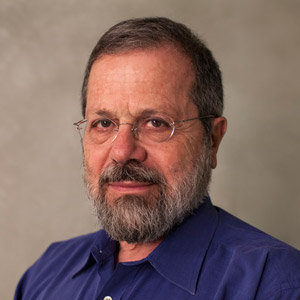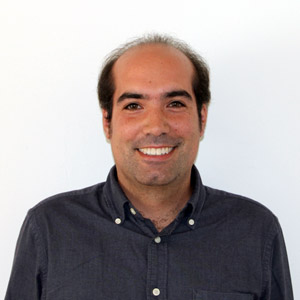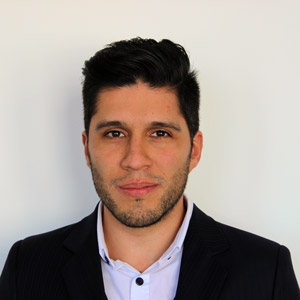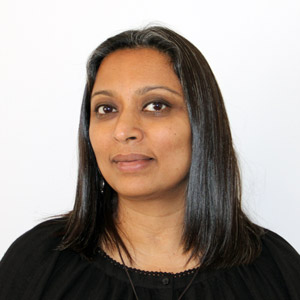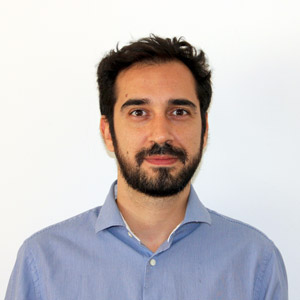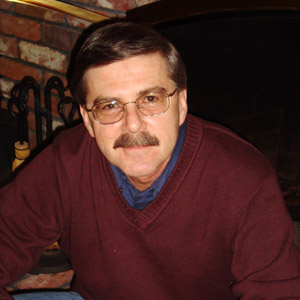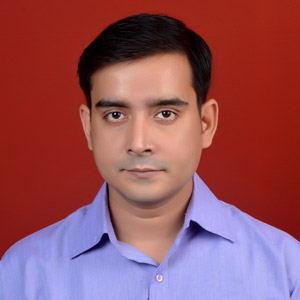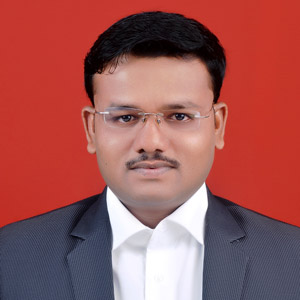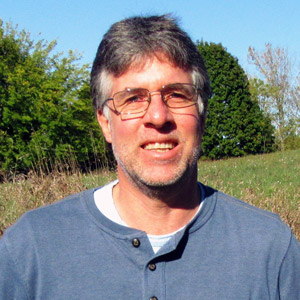-
GhanaAccra
 Sub-Saharan Africa
Sub-Saharan Africa -
EthiopiaAddis Ababa
 Sub-Saharan Africa
Sub-Saharan Africa -
IndiaAhmedabad
 South and Central Asia
South and Central Asia -
IranAhvaz
 South and Central Asia
South and Central Asia -
EgyptAlexandria
 Western Asia and North Africa
Western Asia and North Africa -
AlgeriaAlgiers
 Western Asia and North Africa
Western Asia and North Africa -
ChinaAnqing, Anhui
 East Asia and the Pacific
East Asia and the Pacific -
BelgiumAntwerp
 Europe and Japan
Europe and Japan -
TanzaniaArusha
 Sub-Saharan Africa
Sub-Saharan Africa -
RussiaAstrakhan
 Europe and Japan
Europe and Japan -
New ZealandAuckland
 Land-Rich Developed Countries
Land-Rich Developed Countries -
PhilippinesBacolod
 Southeast Asia
Southeast Asia -
IraqBaghdad
 Western Asia and North Africa
Western Asia and North Africa -
AzerbaijanBaku
 Western Asia and North Africa
Western Asia and North Africa -
MaliBamako
 Sub-Saharan Africa
Sub-Saharan Africa -
ThailandBangkok
 Southeast Asia
Southeast Asia -
ChinaBeijing, Beijing
 East Asia and the Pacific
East Asia and the Pacific -
MozambiqueBeira
 Sub-Saharan Africa
Sub-Saharan Africa -
IndiaBelgaum
 South and Central Asia
South and Central Asia -
SerbiaBelgrade
 Europe and Japan
Europe and Japan -
BrazilBelo Horizonte
 Latin America and the Caribbean
Latin America and the Caribbean -
RussiaBerezniki
 Europe and Japan
Europe and Japan -
GermanyBerlin
 Europe and Japan
Europe and Japan -
ChinaBicheng, Chongqing
 East Asia and the Pacific
East Asia and the Pacific -
ColombiaBogota
 Latin America and the Caribbean
Latin America and the Caribbean -
HungaryBudapest
 Europe and Japan
Europe and Japan -
ArgentinaBuenos Aires
 Latin America and the Caribbean
Latin America and the Caribbean -
UzbekistanBukhara
 South and Central Asia
South and Central Asia -
Korea, Rep.Busan
 East Asia and the Pacific
East Asia and the Pacific -
VenezuelaCabimas
 Latin America and the Caribbean
Latin America and the Caribbean -
EgyptCairo
 Western Asia and North Africa
Western Asia and North Africa -
VenezuelaCaracas
 Latin America and the Caribbean
Latin America and the Caribbean -
PhilippinesCebu City
 Southeast Asia
Southeast Asia -
ChinaChangzhi, Shanxi
 East Asia and the Pacific
East Asia and the Pacific -
ChinaChangzhou, Jingsu
 East Asia and the Pacific
East Asia and the Pacific -
ChinaChengdu, Sichuan
 East Asia and the Pacific
East Asia and the Pacific -
ChinaChengguan, Guizhou
 East Asia and the Pacific
East Asia and the Pacific -
Korea, Rep.Cheonan
 East Asia and the Pacific
East Asia and the Pacific -
United StatesChicago
 Land-Rich Developed Countries
Land-Rich Developed Countries -
IndonesiaCirebon
 Southeast Asia
Southeast Asia -
United StatesCleveland
 Land-Rich Developed Countries
Land-Rich Developed Countries -
BoliviaCochabamba
 Latin America and the Caribbean
Latin America and the Caribbean -
IndiaCoimbatore
 South and Central Asia
South and Central Asia -
ArgentinaCordoba
 Latin America and the Caribbean
Latin America and the Caribbean -
MexicoCuliacan
 Latin America and the Caribbean
Latin America and the Caribbean -
BrazilCuritiba
 Latin America and the Caribbean
Latin America and the Caribbean -
BangladeshDhaka
 South and Central Asia
South and Central Asia -
RussiaDzerzhinsk
 Europe and Japan
Europe and Japan -
BrazilFlorianopolis
 Latin America and the Caribbean
Latin America and the Caribbean -
JapanFukuoka
 Europe and Japan
Europe and Japan -
United StatesGainesville
 Land-Rich Developed Countries
Land-Rich Developed Countries -
ChinaGaoyou, Jiangsu
 East Asia and the Pacific
East Asia and the Pacific -
NigeriaGombe
 Sub-Saharan Africa
Sub-Saharan Africa -
BelarusGomel
 Europe and Japan
Europe and Japan -
IranGorgan
 South and Central Asia
South and Central Asia -
MexicoGuadalajara
 Latin America and the Caribbean
Latin America and the Caribbean -
ChinaGuangzhou, Guangdong
 East Asia and the Pacific
East Asia and the Pacific -
GuatemalaGuatemala City
 Latin America and the Caribbean
Latin America and the Caribbean -
ChinaGuixi, Chongqing
 East Asia and the Pacific
East Asia and the Pacific -
Korea, Rep.Gwangju
 East Asia and the Pacific
East Asia and the Pacific -
ChinaHaikou, Hainan
 East Asia and the Pacific
East Asia and the Pacific -
GermanyHalle
 Europe and Japan
Europe and Japan -
ChinaHangzhou, Zhejiang
 East Asia and the Pacific
East Asia and the Pacific -
IndiaHindupur
 South and Central Asia
South and Central Asia -
VietnamHo Chi Minh City
 Southeast Asia
Southeast Asia -
CubaHolguin
 Latin America and the Caribbean
Latin America and the Caribbean -
ChinaHong Kong, Hong Kong
 East Asia and the Pacific
East Asia and the Pacific -
United StatesHouston
 Land-Rich Developed Countries
Land-Rich Developed Countries -
IndiaHyderabad
 South and Central Asia
South and Central Asia -
NigeriaIbadan
 Sub-Saharan Africa
Sub-Saharan Africa -
BrazilIlheus
 Latin America and the Caribbean
Latin America and the Caribbean -
MalaysiaIpoh
 Southeast Asia
Southeast Asia -
TurkeyIstanbul
 Western Asia and North Africa
Western Asia and North Africa -
IndiaJaipur
 South and Central Asia
South and Central Asia -
IndiaJalna
 South and Central Asia
South and Central Asia -
BrazilJequie
 Latin America and the Caribbean
Latin America and the Caribbean -
ChinaJinan, Shandong
 East Asia and the Pacific
East Asia and the Pacific -
Korea, Rep.Jinju
 East Asia and the Pacific
East Asia and the Pacific -
South AfricaJohannesburg
 Sub-Saharan Africa
Sub-Saharan Africa -
AfghanistanKabul
 South and Central Asia
South and Central Asia -
ChinaKaiping, Guangdong
 East Asia and the Pacific
East Asia and the Pacific -
TunisiaKairouan
 Western Asia and North Africa
Western Asia and North Africa -
UgandaKampala
 Sub-Saharan Africa
Sub-Saharan Africa -
IndiaKanpur
 South and Central Asia
South and Central Asia -
PakistanKarachi
 South and Central Asia
South and Central Asia -
LithuaniaKaunas
 Europe and Japan
Europe and Japan -
TurkeyKayseri
 Western Asia and North Africa
Western Asia and North Africa -
SudanKhartoum
 Western Asia and North Africa
Western Asia and North Africa -
RwandaKigali
 Sub-Saharan Africa
Sub-Saharan Africa -
United StatesKilleen
 Land-Rich Developed Countries
Land-Rich Developed Countries -
Congo, Dem. Rep.Kinshasa
 Sub-Saharan Africa
Sub-Saharan Africa -
IndiaKolkata
 South and Central Asia
South and Central Asia -
IndiaKozhikode
 South and Central Asia
South and Central Asia -
NigeriaLagos
 Sub-Saharan Africa
Sub-Saharan Africa -
PakistanLahore
 South and Central Asia
South and Central Asia -
SwitzerlandLausanne
 Europe and Japan
Europe and Japan -
FranceLe Mans
 Europe and Japan
Europe and Japan -
NicaraguaLeon
 Latin America and the Caribbean
Latin America and the Caribbean -
ChinaLeshan, Sichuan
 East Asia and the Pacific
East Asia and the Pacific -
United KingdomLondon
 Europe and Japan
Europe and Japan -
United StatesLos Angeles
 Land-Rich Developed Countries
Land-Rich Developed Countries -
AngolaLuanda
 Sub-Saharan Africa
Sub-Saharan Africa -
Congo, Dem. Rep.Lubumbashi
 Sub-Saharan Africa
Sub-Saharan Africa -
SpainMadrid
 Europe and Japan
Europe and Japan -
TurkeyMalatya
 Western Asia and North Africa
Western Asia and North Africa -
IndiaMalegaon
 South and Central Asia
South and Central Asia -
United KingdomManchester
 Europe and Japan
Europe and Japan -
PhilippinesManila
 Southeast Asia
Southeast Asia -
MoroccoMarrakesh
 Western Asia and North Africa
Western Asia and North Africa -
IndonesiaMedan
 Southeast Asia
Southeast Asia -
MexicoMexico City
 Latin America and the Caribbean
Latin America and the Caribbean -
ItalyMilan
 Europe and Japan
Europe and Japan -
United StatesMinneapolis-St. Paul
 Land-Rich Developed Countries
Land-Rich Developed Countries -
United StatesModesto
 Land-Rich Developed Countries
Land-Rich Developed Countries -
CanadaMontreal
 Land-Rich Developed Countries
Land-Rich Developed Countries -
RussiaMoscow
 Europe and Japan
Europe and Japan -
IndiaMumbai
 South and Central Asia
South and Central Asia -
MyanmarMyeik
 Southeast Asia
Southeast Asia -
KenyaNakuru
 Sub-Saharan Africa
Sub-Saharan Africa -
ZambiaNdola
 Sub-Saharan Africa
Sub-Saharan Africa -
United StatesNew York
 Land-Rich Developed Countries
Land-Rich Developed Countries -
UkraineNikolaev
 Europe and Japan
Europe and Japan -
JapanOkayama
 Europe and Japan
Europe and Japan -
GermanyOldenburg
 Europe and Japan
Europe and Japan -
JapanOsaka
 Europe and Japan
Europe and Japan -
NigeriaOyo
 Sub-Saharan Africa
Sub-Saharan Africa -
IndonesiaPalembang
 Southeast Asia
Southeast Asia -
ItalyPalermo
 Europe and Japan
Europe and Japan -
BrazilPalmas
 Latin America and the Caribbean
Latin America and the Caribbean -
IndiaParbhani
 South and Central Asia
South and Central Asia -
IndonesiaParepare
 Southeast Asia
Southeast Asia -
FranceParis
 Europe and Japan
Europe and Japan -
IndonesiaPematangsiantar
 Southeast Asia
Southeast Asia -
United StatesPhiladelphia
 Land-Rich Developed Countries
Land-Rich Developed Countries -
ChinaPingxiang, Jiangxi
 East Asia and the Pacific
East Asia and the Pacific -
NepalPokhara
 South and Central Asia
South and Central Asia -
South AfricaPort Elizabeth
 Sub-Saharan Africa
Sub-Saharan Africa -
United StatesPortland, OR
 Land-Rich Developed Countries
Land-Rich Developed Countries -
IndiaPune
 South and Central Asia
South and Central Asia -
Korea, Dem. Rep.Pyongyang
 East Asia and the Pacific
East Asia and the Pacific -
ChinaQingdao, Shandong
 East Asia and the Pacific
East Asia and the Pacific -
IranQom
 South and Central Asia
South and Central Asia -
EcuadorQuito
 Latin America and the Caribbean
Latin America and the Caribbean -
BangladeshRajshahi
 South and Central Asia
South and Central Asia -
United StatesRaleigh
 Land-Rich Developed Countries
Land-Rich Developed Countries -
MalaysiaRawang
 Southeast Asia
Southeast Asia -
MexicoReynosa
 Latin America and the Caribbean
Latin America and the Caribbean -
BrazilRibeirao Preto
 Latin America and the Caribbean
Latin America and the Caribbean -
Saudi ArabiaRiyadh
 Western Asia and North Africa
Western Asia and North Africa -
UkraineRovno
 Europe and Japan
Europe and Japan -
BangladeshSaidpur
 South and Central Asia
South and Central Asia -
RussiaSaint Petersburg
 Europe and Japan
Europe and Japan -
El SalvadorSan Salvador
 Latin America and the Caribbean
Latin America and the Caribbean -
YemenSana
 Western Asia and North Africa
Western Asia and North Africa -
ChileSantiago
 Latin America and the Caribbean
Latin America and the Caribbean -
BrazilSao Paulo
 Latin America and the Caribbean
Latin America and the Caribbean -
Korea, Rep.Seoul
 East Asia and the Pacific
East Asia and the Pacific -
ChinaShanghai, Shanghai
 East Asia and the Pacific
East Asia and the Pacific -
United KingdomSheffield
 Europe and Japan
Europe and Japan -
ChinaShenzhen, Guangdong
 East Asia and the Pacific
East Asia and the Pacific -
KazakhstanShymkent
 South and Central Asia
South and Central Asia -
PakistanSialkot
 South and Central Asia
South and Central Asia -
SingaporeSingapore
 Southeast Asia
Southeast Asia -
IndiaSingrauli
 South and Central Asia
South and Central Asia -
IndiaSitapur
 South and Central Asia
South and Central Asia -
United StatesSpringfield, MA
 Land-Rich Developed Countries
Land-Rich Developed Countries -
ChinaSuining, Sichuan
 East Asia and the Pacific
East Asia and the Pacific -
FijiSuva
 East Asia and the Pacific
East Asia and the Pacific -
AustraliaSydney
 Land-Rich Developed Countries
Land-Rich Developed Countries -
ChinaTaipei, Taiwan
 East Asia and the Pacific
East Asia and the Pacific -
ChinaTangshan, Hebei
 East Asia and the Pacific
East Asia and the Pacific -
UzbekistanTashkent
 South and Central Asia
South and Central Asia -
AlgeriaTebessa
 Western Asia and North Africa
Western Asia and North Africa -
IranTehran
 South and Central Asia
South and Central Asia -
IsraelTel Aviv
 Western Asia and North Africa
Western Asia and North Africa -
GreeceThessaloniki
 Europe and Japan
Europe and Japan -
ChinaTianjin, Tianjin
 East Asia and the Pacific
East Asia and the Pacific -
MexicoTijuana
 Latin America and the Caribbean
Latin America and the Caribbean -
JapanTokyo
 Europe and Japan
Europe and Japan -
United StatesToledo
 Land-Rich Developed Countries
Land-Rich Developed Countries -
RussiaTyumen
 Europe and Japan
Europe and Japan -
MongoliaUlaanbaatar
 East Asia and the Pacific
East Asia and the Pacific -
ColombiaValledupar
 Latin America and the Caribbean
Latin America and the Caribbean -
CanadaVictoria
 Land-Rich Developed Countries
Land-Rich Developed Countries -
AustriaVienna
 Europe and Japan
Europe and Japan -
IndiaVijayawada
 South and Central Asia
South and Central Asia -
VietnamVinh Long
 Southeast Asia
Southeast Asia -
PolandWarsaw
 Europe and Japan
Europe and Japan -
ChinaWuhan, Hubei
 East Asia and the Pacific
East Asia and the Pacific -
ChinaXingping, Shaanxi
 East Asia and the Pacific
East Asia and the Pacific -
ChinaXucheng, Jiangsu
 East Asia and the Pacific
East Asia and the Pacific -
JapanYamaguchi
 Europe and Japan
Europe and Japan -
ChinaYanggu, Shandong
 East Asia and the Pacific
East Asia and the Pacific -
ChinaYiyang, Hunan
 East Asia and the Pacific
East Asia and the Pacific -
ChinaYucheng, Zhejiang
 East Asia and the Pacific
East Asia and the Pacific -
ChinaYulin, Guangxi
 East Asia and the Pacific
East Asia and the Pacific -
ChinaZhengzhou, Henan
 East Asia and the Pacific
East Asia and the Pacific -
ChinaZhuji, Zhejiang
 East Asia and the Pacific
East Asia and the Pacific -
ChinaZunyi, Guizhou
 East Asia and the Pacific
East Asia and the Pacific -
NetherlandsZwolle
 Europe and Japan
Europe and Japan















































































